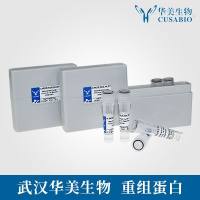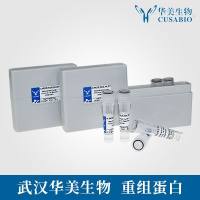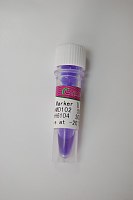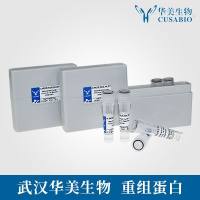DNA Interstrand Cross‐Link Formation Using Furan as a Masked Reactive Aldehyde
互联网
- Abstract
- Table of Contents
- Materials
- Figures
- Literature Cited
Abstract
This unit describes a method for interstrand cross?linking between a furan?modified oligonucleotide and its unmodified complement. The synthesis of two furan?modified phosphoramidites, selected based on high cross?linking yield versus improved cross?linking selectivity, is described. The methods allow gram?scale synthesis starting from stable and readily available furan derivatives. Cross?linking requires selective oxidation of the furan moiety to an aldehyde. The masked nature of the latter avoids undesired and off?target reactions, resulting in clean and high?yield cross?link formation. Curr. Protoc. Nucleic Acid Chem . 54:5.12.1?5.12.16. © 2013 by John Wiley & Sons, Inc.
Keywords: cross?linking; oligonucleotide; nucleoside; furan
Table of Contents
- Introduction
- Basic Protocol 1: Synthesis of Selective 2′‐Furan‐Modified Uridine Nucleoside Phosphoramidite
- Alternate Protocol 1: Synthesis of 2′‐Furan‐Modified Acyclic Nucleoside Phosphoramidite
- Basic Protocol 2: Synthesis of Furan‐Containing Oligodeoxynucleotides
- Basic Protocol 3: Selective Formation of DNA Interstrand Cross‐Links
- Commentary
- Literature Cited
- Figures
Materials
Basic Protocol 1: Synthesis of Selective 2′‐Furan‐Modified Uridine Nucleoside Phosphoramidite
Materials
Alternate Protocol 1: Synthesis of 2′‐Furan‐Modified Acyclic Nucleoside Phosphoramidite
Materials
Basic Protocol 2: Synthesis of Furan‐Containing Oligodeoxynucleotides
Materials
Basic Protocol 3: Selective Formation of DNA Interstrand Cross‐Links
Materials
|
Figures
-

Figure 5.12.1 Overview of furan‐based interstrand cross‐linking methodology. Furan‐modified nucleosides are converted to the corresponding phosphoramidites and incorporated into ODNs under standard conditions. After hybridization with a suitable complement, the furan‐modified ODN is oxidized to generate a reactive 4‐oxo butenal, which reacts efficiently with the nucleophilic exocyclic amine of the opposite base. View Image -

Figure 5.12.2 Synthesis of 2′‐furan‐modified nucleoside phosphoramidite 7 . (a) (PhO)2 CO, NaHCO3 , DMF), 16 hr, 115°C, 74%; (b) LiF, Me3 SiN3 , DMF/TMEDA, 63 hr, 110°C, 72%; (c) PPh3 , MeOH, H2 O, 3 hr, 50°C, 89%; (d) furfurylisocyanate, DMF, 1 hr, 96%; (e) DMTrCl, pyridine, 17 hr, rt, 79%; (f) 2‐cyanoethyl‐ N , N ‐diisopropylchlorophosphine, DIPEA, 2.5 hr, 0°C, 50%. View Image -

Figure 5.12.3 Synthesis of acyclic furan‐modified phosphoramidite 14 . (a) pTsCl (1.15 eq.), pyridine, 0°C, 2.5 hr, 91%; (b) LiBr (5 eq.), DMF, 60°C, 1 hr, 76%; (c) furan (2 eq.), BuLi (1.8 eq.), THF, −78° to 0°C, 16 hr, 62% over two steps; (d) 4 M HCl, THF, 3 hr, 0°C, 89%; (e) DMTrCl (1 eq.), pyridine, 0°C, 1.25 hr, 66%; (f) (iPr2 N)(NCCH2 CH2 O)PCl (2.5 eq.), DIPEA, CH2 Cl2 , 1.5h, rt, 79%. View Image -

Figure 5.12.4 Reaction mechanism for formation of a stably cross‐linked ODN. View Image
Videos
Literature Cited
| Literature Cited | |
| Bakhiya, N. and Appel, K.E. 2010. Toxicity and carcinogenity of furan in human diet. Arch. Toxicol. 84:563‐578. | |
| Grillari, J., Katinger H., and Voglauer, R. 2007. Contributions of DNA interstrand cross‐links to aging of cells and organisms. Nucleic Acids Res. 35:7566‐7576. | |
| Guainazzi, A. and Scharer, O.D. 2010. Using synthetic DNA interstrand crosslinks to elucidate repair pathways and identify new therapeutic targets for cancer chemotherapy. Cell. Mol. Life Sci. 67:3683‐3697. | |
| Halila, S., Velasco, T., De Clercq, P., and Madder, A. 2005. Fine‐tuning furan toxicity: Fast and quantitative DNA interchain crosslink formation upon selective oxidation of a furan containing oligonucleotide. Chem. Commun. 7:936‐938. | |
| Jawalekar, A.M., Op de Beeck, M., van Delft, F.L., and Madder, A. 2011. Synthesis and incorporation of a furan‐modified adenosine building block for DNA interstrand crosslinking. Chem. Commun. 47:2796‐2798. | |
| Kirschenheuter, G.P., Zhai, Y.S., and Pieken, W.A. 1994. An improved synthesis of 2′‐azido‐2′‐deoxyuridine. Tetrahedron Lett. 35:8517‐8520. | |
| Lin, F.L., Hoyt, H.M., van Halbeek, H., Bergman, R.G., and Bertozzi, C.R. 2005. Mechanistic investigation of the Staudinger ligation. J. Am. Chem. Soc. 127:2686‐2695. | |
| McGee, D.P.C., VaughnSettle, A., Vargeese, C., and Zhai, Y.S. 1996. 2′‐Amino‐2′‐deoxyuridine via an intramolecular cyclization of a trichloroacetimidate. J. Org. Chem. 61:781‐785. | |
| Noll, D.M., McGregor Mason, T., and Miller, P.S. 2006 Formation and repair of interstrand cross‐links in DNA. Chem. Rev. 106:277‐301. | |
| Op de Beeck, M. and Madder, A. 2011. Unprecedented C‐selective interstrand cross‐linking through in situ oxidation of furan‐modified oligodeoxynucleotides. J. Am. Chem. Soc. 133:796‐807. | |
| Op de Beeck, M. and Madder, A. 2012. Sequence specific DNA cross‐linking triggered by visible light. J. Am. Chem. Soc. 134:10737‐10740. | |
| Peterson, L.A. 2006. Electrophilic intermediates produced by bioactivation of furan. Drug Metab. Rev. 38:615‐626. | |
| Singh, I., Vyle, J.S., and Heaney, F. 2009 Fast, copper‐free click chemistry: A convenient solid‐phase approach to oligonucleotide conjugation. Chem. Comm. 22:3276‐3278. | |
| Stevens, K. and Madder, A. 2009. Furan‐modified oligonucleotides for fast, high‐yielding and site‐selective DNA inter‐strand cross‐linking with non‐modified complements. Nucleic Acid. Res. 37:1555‐1565. | |
| Stevens, K., Claeys, D.D., Catak, S., Figaroli, S., Hocek, M., Tromp, J.M., Schurch, S., Van Speybroeck, V., and Madder, A. 2011. Furan‐oxidation‐triggered inducible DNA cross‐linking: Acyclic versus cyclic furan‐containing building blocks‐on the benefit of restoring the cyclic sugar backbone. Chem. Eur. J. 17:6940‐6953. |







